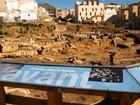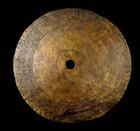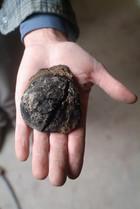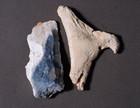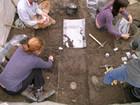You are here
News
- (-) Remove Discoveries filter Discoveries
A team from the Inrap is carrying out a major excavation on the boulevard Charles-Nédélec in Marseille where, over eight millennia, Neolithic, Greek and Modern populations have succeeded one another. The dig is curated by the Regional archaeology service within the framework of the ZAC Saint-Charles, a vast programme of urban development carried out by Euroméditerranée.
A team from the Inrap is at present excavating a site in the avenue Jean-Jaurès, prior to the construction of an underground car-park by the town of Nîmes.
A team from the Institut National d'archéologie preventive (Inrap) has discovered a mortuary practice hitherto unknown in Roman Gaul. The archaeologists are working in an area of 200m2 intended for the construction of a private house at Evreux (Eure).
An object unique of its kind has been discovered in the Gallo-Roman town of Chevroches (Nièvre) during preventive excavations carried out by a team from the Institut national de recherches archéologiques preventives (Inrap). The Musée archéologique of Dijon in collaboration with Inrap is displaying this discovery until 28 January 2007.
After five months, the preventive archaeological excavation conducted by Inrap on the future A3C building site, Saint-Symphorien street in Rheims, is reaching its end. Extending over 500 m2, the archaeological levels are more than 5 m deep and recount 2,000 years of continuous human occupation.
A team from the Institut National de Recherches Archéologiques Préventives (Inrap) is in the process of excavating a Roman quarter in the heart of the city of Metz. Curated by the State (Drac of the Lorraine region), the excavation of this vast site (15,000 m2) precedes the construction of a car park under the future Centre-Pompidou-Metz. This operation will employ at least fifteen archaeologists for a total of 5,300 working days, including post excavation analysis,. until February 2007.
In the Somme region, a joint team of CNRS and Inrap archaeologists have discovered a site fundamental for our understanding of the history of Neanderthals.
In advance of work on line N° 2 of the Montpellier tramway, an excavation, curated by the Regional Archaeology Service, was carried out at Fontaine de Pila street by archaeologists from INRAP and the Centre National de Recherche Scientifique (CNRS). Together, they discovered the oldest traces of human occupation in Montpellier, dating back to well before the creation of the city!


